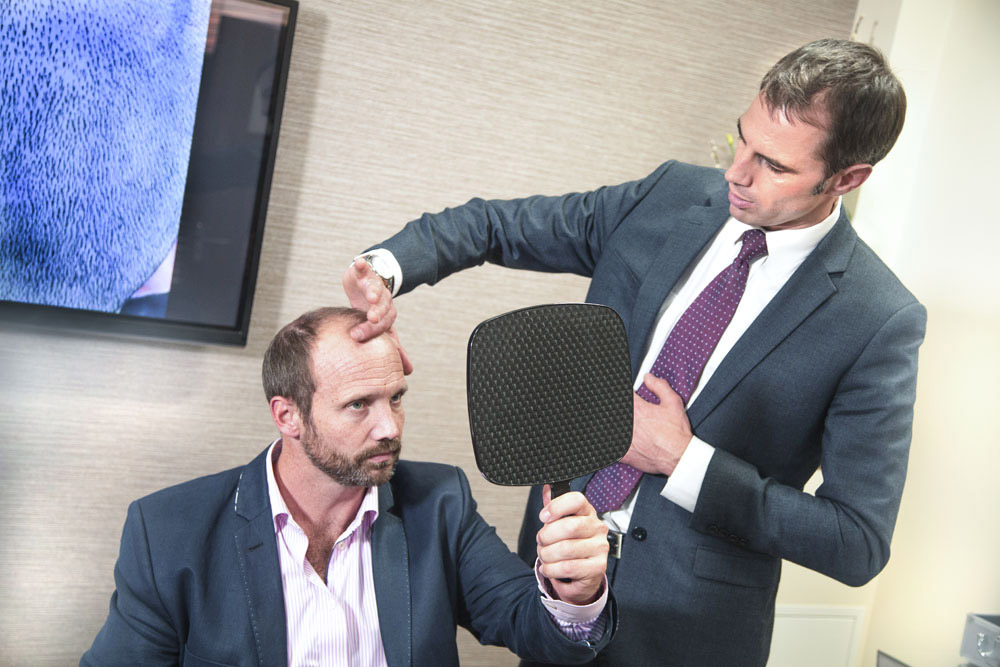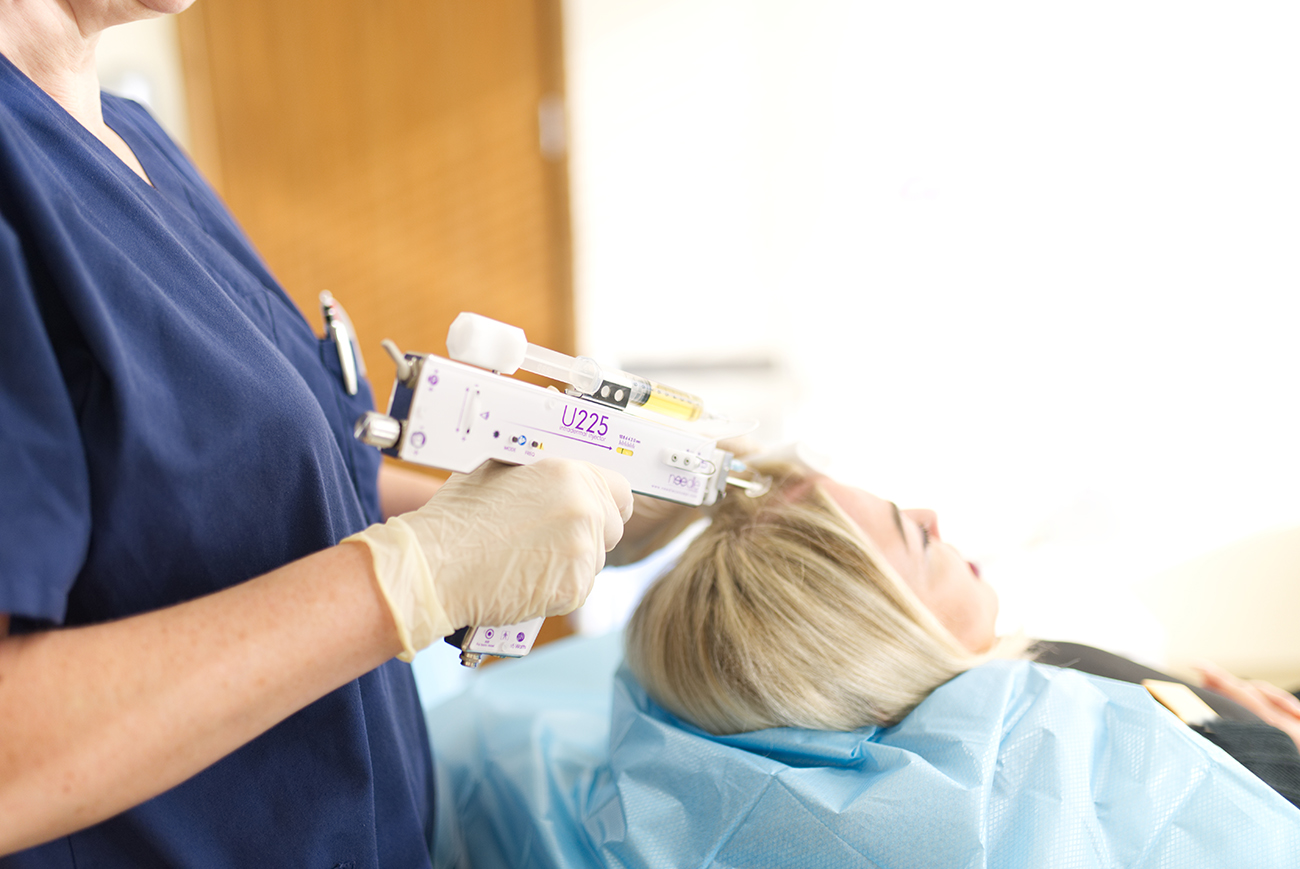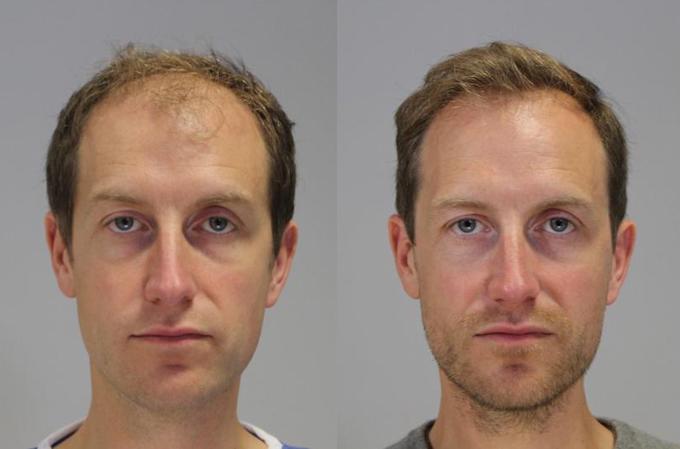Who is a candidate for hair transplant surgery?
12th June 2019

Hair transplant surgery can transform appearances and change lives, but can also be the cause of great disappointment and distress if poorly planned or performed on the wrong person.
What is the risk of having a hair transplant at a young age?
If performed on someone too young or if an inappropriately low or youthful hairline is created, it will result in an odd-looking appearance when inevitable further hair loss occurs.
The very limited amount of hair that we all have available for transplanting will usually be insufficient to replace the ongoing thinning hair, creating an irreversible situation that can only be “patched up” rather than cured.
This is why at The Maitland Clinic we only perform surgery on patients that we are confident will have a natural-looking result and one that will continue to look natural for their long term future.

What are the options for young men with hair loss?
It is very common for us to receive enquiries from young men asking for a hair transplant. Although there are lots of treatment options that we can offer young men, we do not perform hair transplant surgery in men under the age of 27, other than in exceptional circumstances.
Of course, simply being over the age of 27 does not automatically make someone a good or safe candidate for hair surgery. In order to operate, we need to be confident that there is a sufficient supply of donor hair at the back and sides of the scalp to allow us to cover enough of the head for a natural appearance.
If hair loss has not been stabilised by medication, age or just lucky genes, we are unable to know how much permanent donor hair someone has or how large an area of hair loss is going to occur throughout a lifetime. Therefore we like to wait until hair loss has stopped or slowed down before offering a hair transplant.
Under what circumstances would I be a candidate for surgery at The Maitland Clinic?
To become a candidate for hair transplant surgery we require (1) stability of the hair loss process and (2) acceptance of a conservative, high hairline shape that will look appropriate throughout the rest of your life.
(1) How to stabilise your hair loss
The most effective non-surgical treatment for male pattern hair loss is finasteride (branded as Propecia). You can read more about Propecia here. Most men find that hair loss slows, stops or even reverses with the use of Propecia tablets.
Other effective options include minoxidil topical liquid or foam (Regaine), platelet-rich plasma (PRP) scalp injections, low-level light therapy and nutrient supplements such as Help Hair protein shakes and Viviscal Professional.
Platelet-rich plasma scalp injections are a good option for people who are reluctant or unable to take medication because they are very safe and natural, being derived from a sample of your own blood. However, they do seem to be even more effective when used in combination with Propecia. More information about PRP can be found on our website.

It is important to note that even if hair loss has slowed or stopped due to the use of medication, we cannot know how long these benefits will last and therefore have to design a hairline which assumes aggressive progression of hair loss in the future.
(2) What hairline design is safe in a younger man?
Dr Ball only creates mature, recessed hairlines in younger men, who have a high chance of extensive hair loss in later life. A higher hairline will look more age-appropriate throughout life and also create a smaller treatment area to increase the chances of having sufficient donor hair to create a natural look.
It is important to note that most young men’s donor hair supply is only enough to allow transplants to cover the frontal area of the scalp, leaving a bald crown at some point in the future. This is another reason for designing a high, recessed hairline, which will look appropriate when the crown eventually becomes thin or bald.
Young men can be suitable for hair transplantation if they accept a safe and recessed hairline as shown in the following example.

Who is NOT suitable for hair transplant surgery?
Hair transplant surgery is not an appropriate treatment for patients under 30 if you are looking to restore your teenage hairline position. As we age all men will experience natural recession in their hairline and temples. This can be just a maturing of the hairline for some but in most cases the hair loss will progress. If a transplanted hairline is created in a low, straight shape, it is highly unlikely to look natural as you age and as you continue to lose hair. We, therefore, do not consider hair transplant surgery in patients under the age 27 who wish to restore a strong hairline like they used to have before any hair loss.
Young patients who are experiencing sudden loss or who have thinning throughout the scalp will always be recommended to try non-surgical options in the first instance. A hair transplant is not a cure for further hair loss and stability is the key for a successful transplant outcome.
At The Maitland Clinic, younger patients, patients with diffuse thinning throughout the scalp and those that have recently noticed hair loss will be encouraged to see a trichologist. A trichologist is able to carry out a thorough assessment and discuss non-surgical options for managing hair loss. They can guide patients through the most effective options and recommend when surgery could be considered in the future.
Exclusion criteria for hair transplant surgery may include bleeding disorders, certain anticoagulant medication (blood thinning drugs), cardiac arrhythmias (certain heart conditions) and body dysmorphic disorder. We take a thorough medial history before and during the consultation process and Dr Ball will be able to discuss the pros and cons of hair transplant surgery in your particular case.










